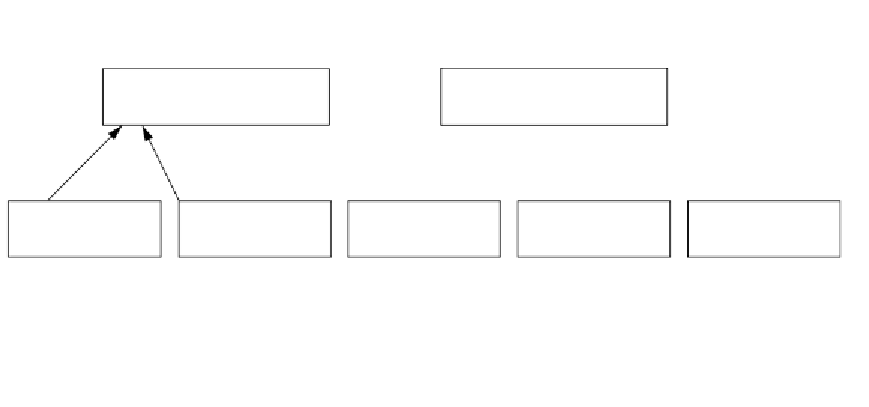Java Reference
In-Depth Information
Another idea would be to try to define an abstract class
Stretchable
as follows:
abstract class Stretchable
{
public abstract void stretch( double factor );
}
We could use
Stretchable
as our missing type in the
stretchAll
method.
At that point, we would try to have
Rectangle
,
Ellipses
, and
Triangle extend
Stretchable
, and provide the
stretch
method:
// Does not work
public class Rectangle extends Shape, Stretchable
{
public void stretch( double factor )
{ ... }
public void area( )
{ ... }
...
}
The picture that we would have at this point is shown in Figure 4.15.
In principle this would be fine, but then we have multiple inheritance,
which we have previously said was illegal, because of concerns that we
might inherit conflicting implementations. As it stands now, only the
Shape
class has an implementation;
Stretchable
is purely abstract, so one could
argue that the compiler should be willing to grant leniency. But it is possible
that after everything is compiled,
Stretchable
could be altered to provide an
Shape
Stretchable
Circle
Square
Rectangle
Ellipse
Triangle
figure 4.15
Inheriting multiple classes. This does not work unless either
Shape
or
Stretchable
is
specifically designated as being implementation-free



Search WWH ::

Custom Search